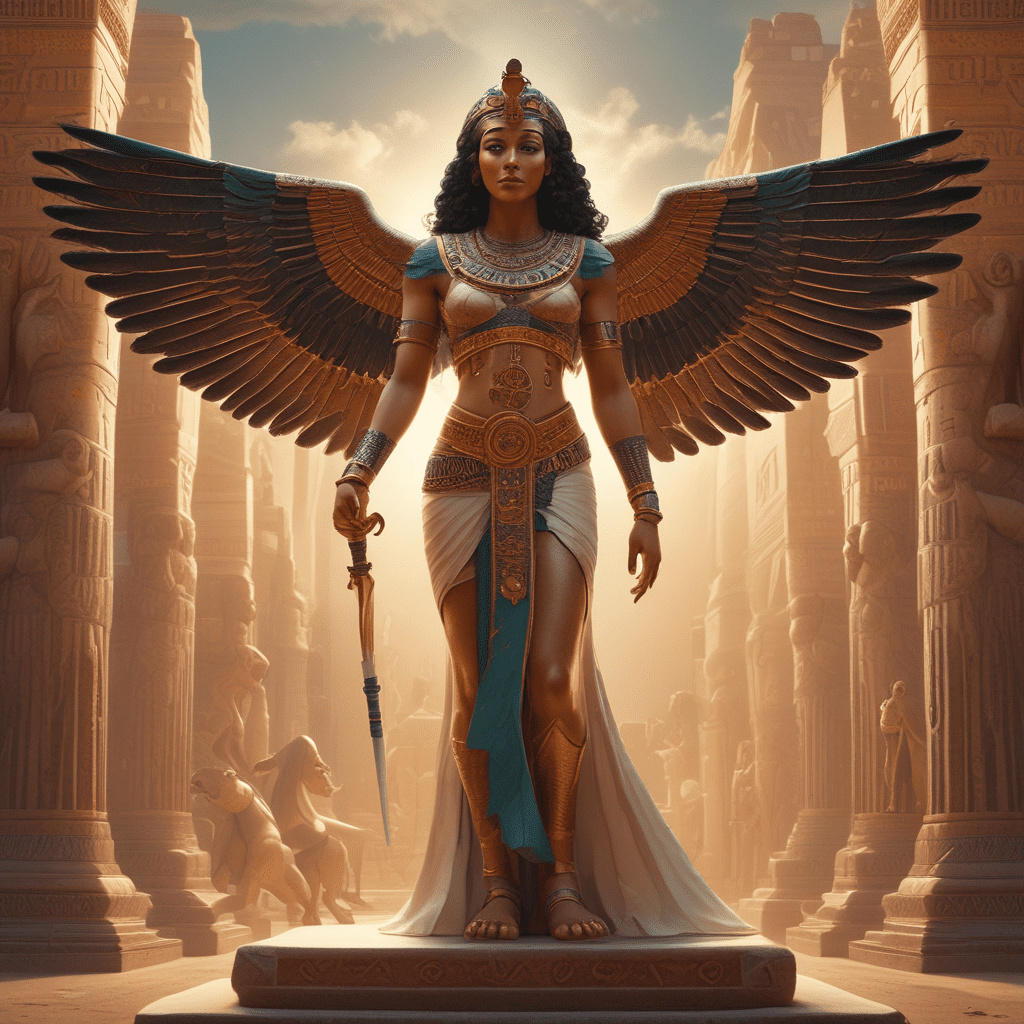The Myth of the Goddess Wadjet in Ancient Egypt
Who is Goddess Wadjet?
Goddess Wadjet, also known as the Green Lady and Cobra Goddess, is one of the oldest deities in ancient Egyptian mythology. She is often depicted as a cobra or a woman with the head of a cobra. Wadjet symbolizes protection, royalty, and justice in Egyptian belief.
Significance in Ancient Egypt
Wadjet held a pivotal role in Egyptian society. She was associated with Lower Egypt and was considered the protector of pharaohs and the people. Her fierce nature was believed to ward off evil spirits, ensuring the safety and prosperity of the kingdom.
Mythological Stories
The Sisters of Justice
One of the most famous myths involving Goddess Wadjet is her connection to the Eye of Ra. In this tale, Wadjet, along with her sister, the lioness goddess Sekhmet, acted as the Eyes of Ra, dishing out punishment and vengeance to evildoers.
The Birth of Ra
In another myth, it is believed that Wadjet was present during the birth of the sun god Ra from a cosmic lotus flower. She played a protective role in Ra’s journey across the sky, ensuring balance and harmony in the world.
Legacy and Worship
Even after the decline of ancient Egyptian civilization, the legacy of Goddess Wadjet persevered. Her symbol, the Uraeus (a rearing cobra), continued to be used on the crowns of pharaohs and as a symbol of protection. Today, she remains a revered figure in books, movies, and modern interpretations of Egyptian mythology.
FAQ about the Myth of the Goddess Wadjet in Ancient Egypt
Who was the Goddess Wadjet in Ancient Egyptian mythology?
The Goddess Wadjet was a powerful deity in Ancient Egyptian mythology. She was often depicted as a cobra or a woman with a cobra head, symbolizing protection, royalty, and the Eye of Ra.
What was the significance of Goddess Wadjet?
Goddess Wadjet represented protection, wisdom, and the all-seeing eye. She was also associated with the pharaohs, guarding them and ensuring their safety and well-being.
How was Goddess Wadjet worshipped in Ancient Egypt?
In Ancient Egypt, Goddess Wadjet was widely worshipped in the city of Buto. Temples dedicated to her were built, and rituals and offerings were made to honor her divine presence and seek her protection.
What is the link between Goddess Wadjet and the Eye of Horus?
The Eye of Horus is closely linked to Goddess Wadjet, representing healing, protection, and power. Both symbols were used in Ancient Egyptian rituals and beliefs to safeguard against evil and promote prosperity.
Was Goddess Wadjet a popular deity in Ancient Egypt?
Yes, Goddess Wadjet was a popular and revered deity in Ancient Egypt. Her influence extended throughout Egyptian history, and



